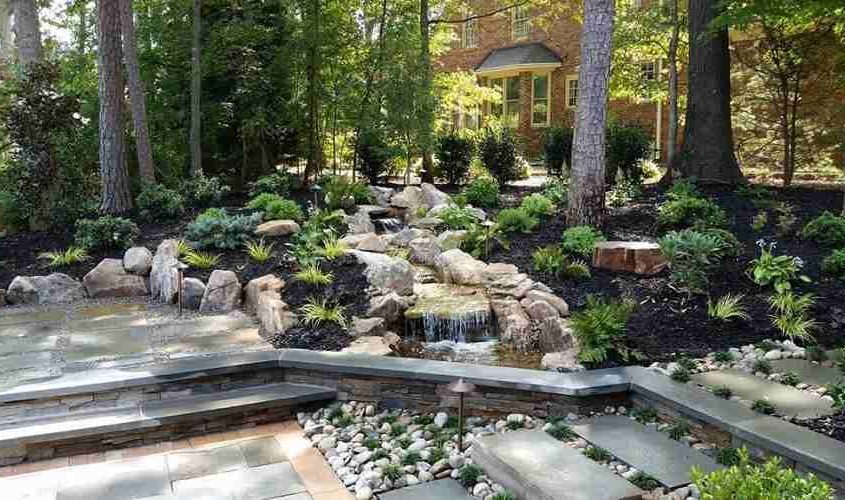When asked to design landscaped gardens, there are many variables that landscapers must take into account. The list of variables is a long one, and can include:
- Client’s budget
- Uses for the garden
- Size of the garden
- Garden pots or no pots?
- Lawn or no lawn?
- Real lawn or artificial lawn?
- Types of plants such as shrubs, flowers, or trees
- Limestone blocks or tiles?
- Decking and pathways
- Fixed features such as seating and retaining walls
- Water features, pools, ponds
- Timescale for completion
Doubtless, you will be able to think of several more. However, there is one aspect of the garden being designed that we guarantee many clients do not even think of, and possibly even a few landscapers fail to think of too, and that is the direction the garden is facing. Whether a garden faces north, east, south, or west, can have a significant impact on what and how well plants grow there, as well as several potential features that may be included.
The direction a garden faces will determine how many hours of direct sunlight it gets during daylight hours, and crucially how hot it becomes when the sun is at its peak. Given all this, it is imperative that landscape designs take account of the garden’s direction, and below we have outlined briefly how this design might be influenced based on whether the garden in question faces, north, east, south, or west, respectively.
Landscaped Gardens That Face North
A garden facing north means that the house is to the south of it. As such, if walking into the garden from the house you will feel the sun to your right in the morning, and to your left in the afternoon. Such a garden effectively receives sunlight all day. and this influences the types of plants you can plant. Ideally, you want those which are known to withstand hot, sunny conditions. You may also want to use shade for outdoor seating and dining areas, using tall shrubs or trees.
Landscaped Gardens That Face East
This garden will receive most of the sunshine it gets in the morning, and in the afternoon much of it will be shaded. This should allow you to include plants that enjoy a mix of sunshine and shaded conditions. Given the amount of shade, it may render a large lawn less than ideal as the grass does not have ideal growing conditions and might appear patchy. This is why many east-facing gardens benefit from having large areas of decking or paving.
Landscaped Gardens That Face South
The majority of direct sunlight these gardens receive is towards the end of the garden furthest from the house, whereas the areas closest to the house receive little sunshine. This means that the plants you include should be tolerant of shade. For the sunnier areas, it is often wise to include taller shrubs and trees to provide some shade and protection from the afternoon sun. Also, paving and decking are usually used near the house as grass is not suited to this shaded area.
Landscaped Gardens That Face West
These gardens receive most of their sunlight in the afternoon and that is why many of the plants used in these gardens are those known to be tolerant of hot sunshine. You often find west-facing gardens with trees and tall plants at the furthest part of the garden to protect the other plants nearby or a lawn. As for living areas in these gardens, they usually require shade so features such as canopies or pagodas are common.

